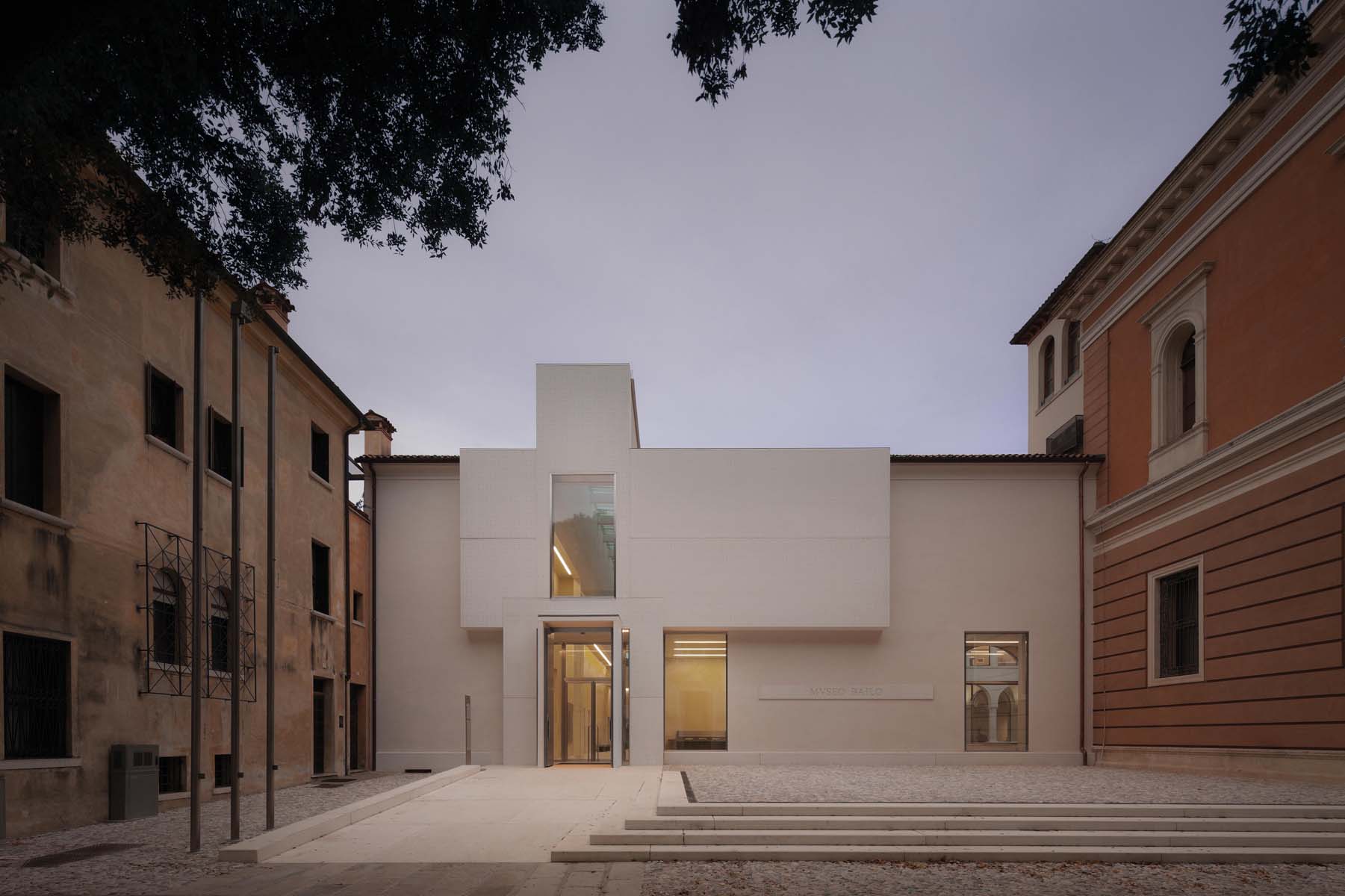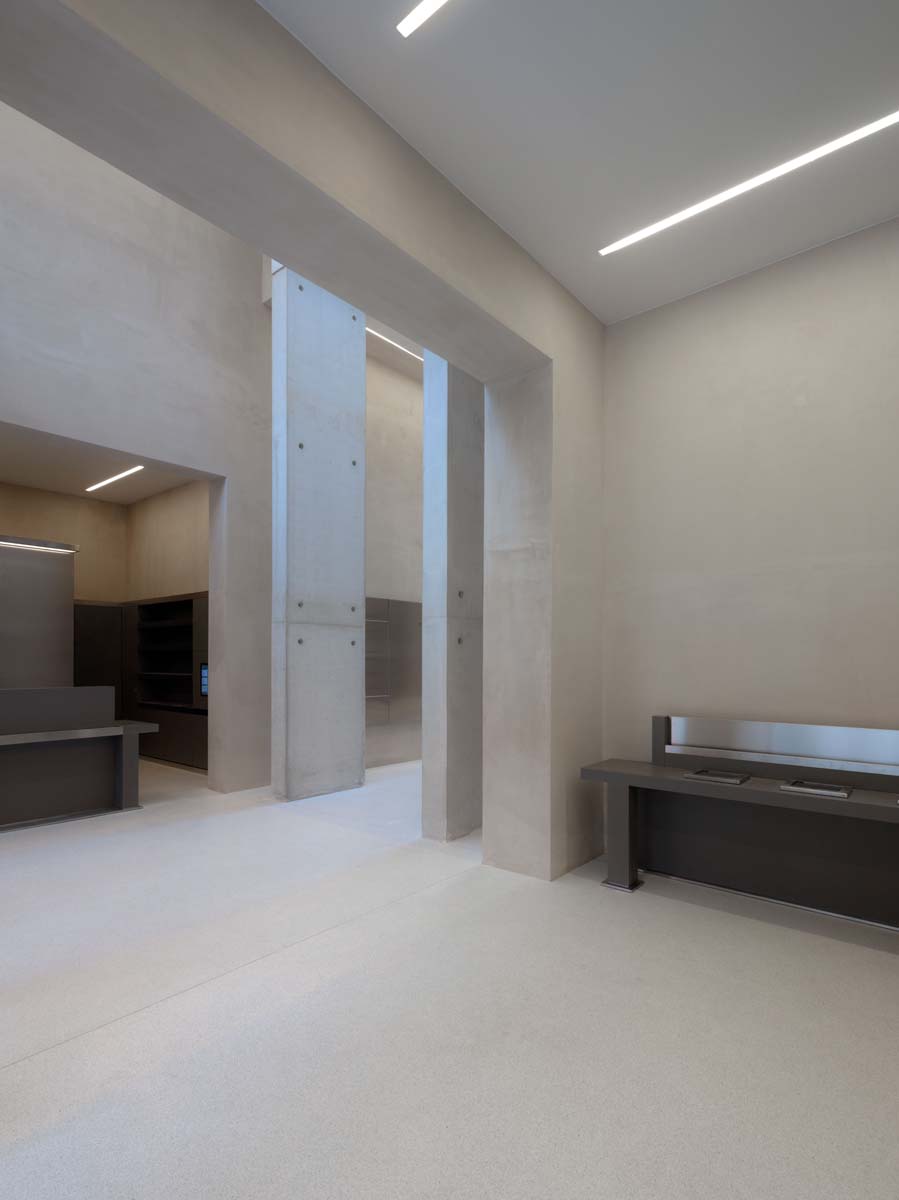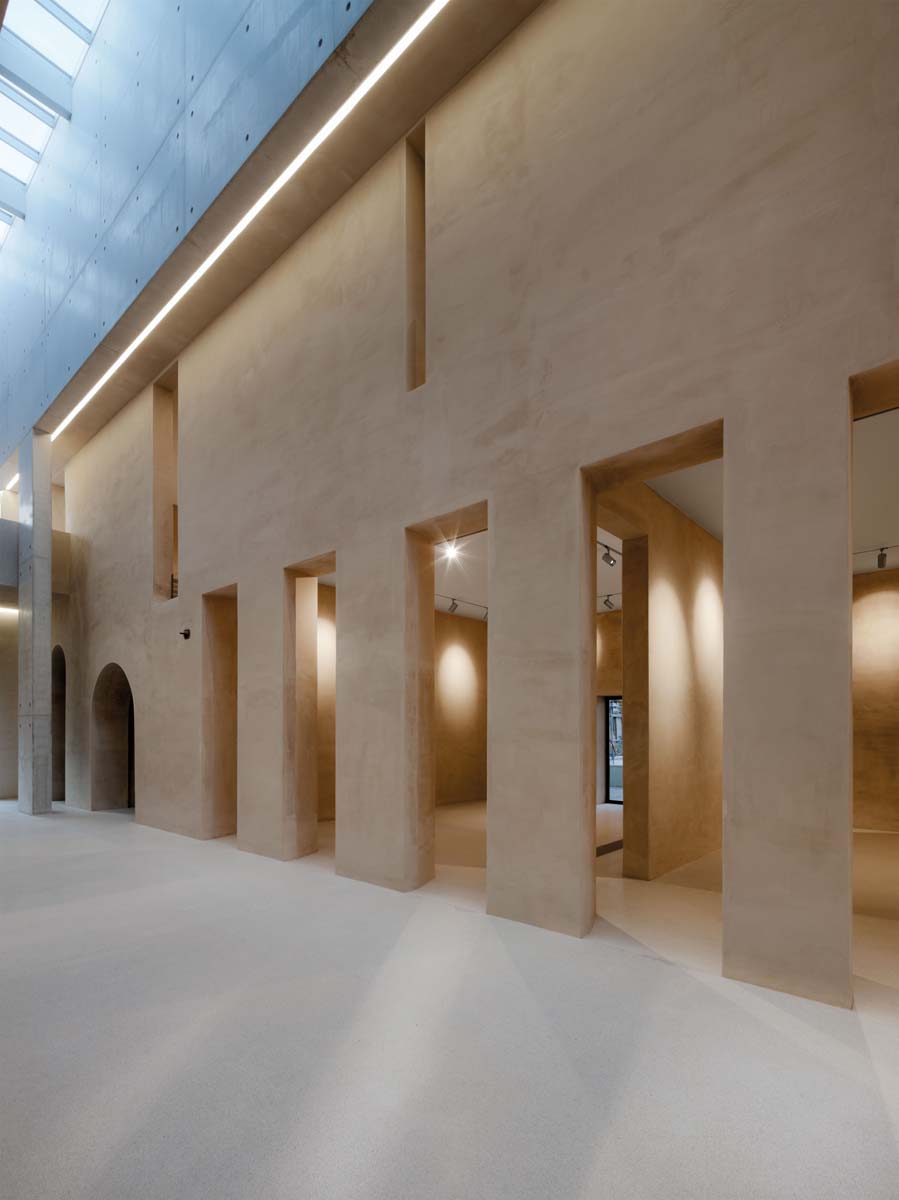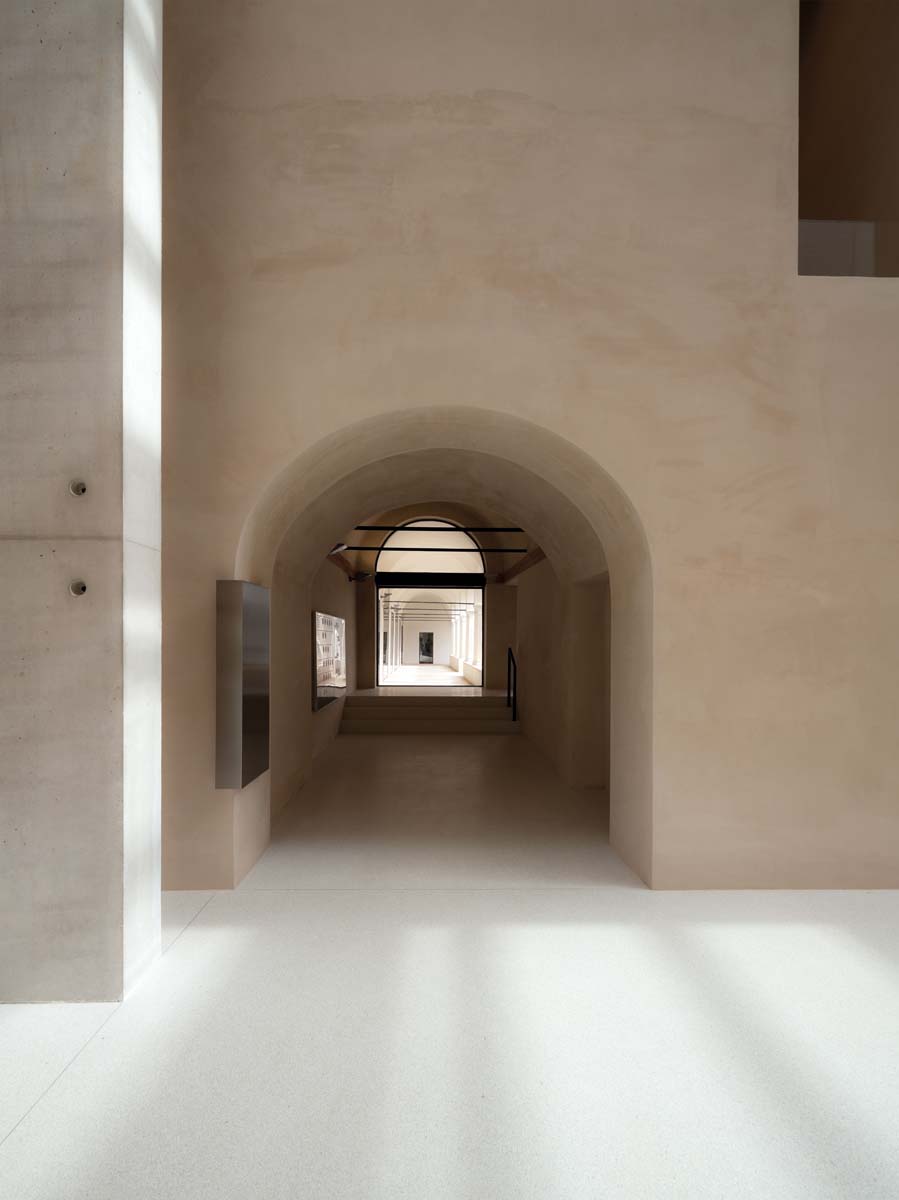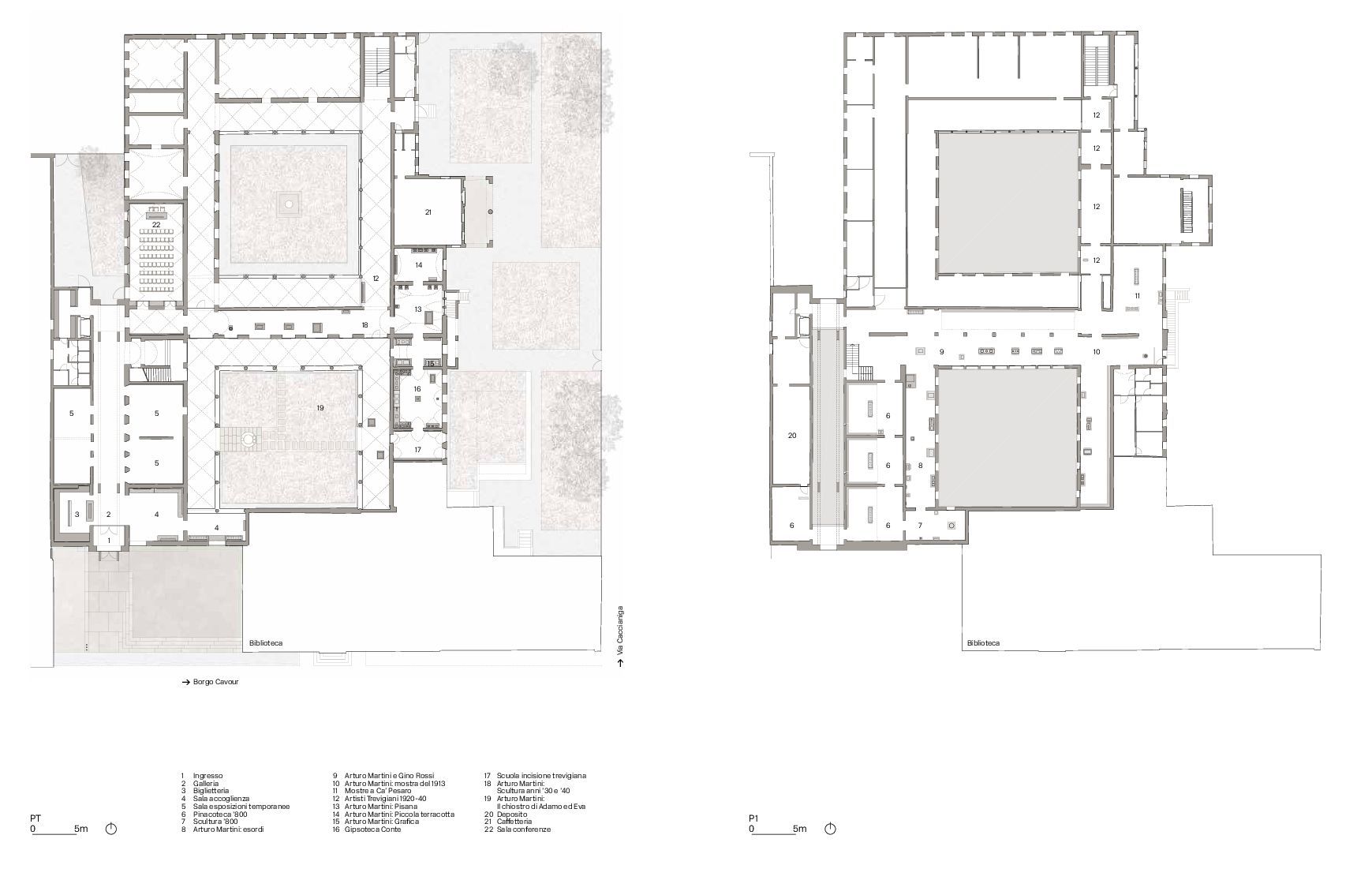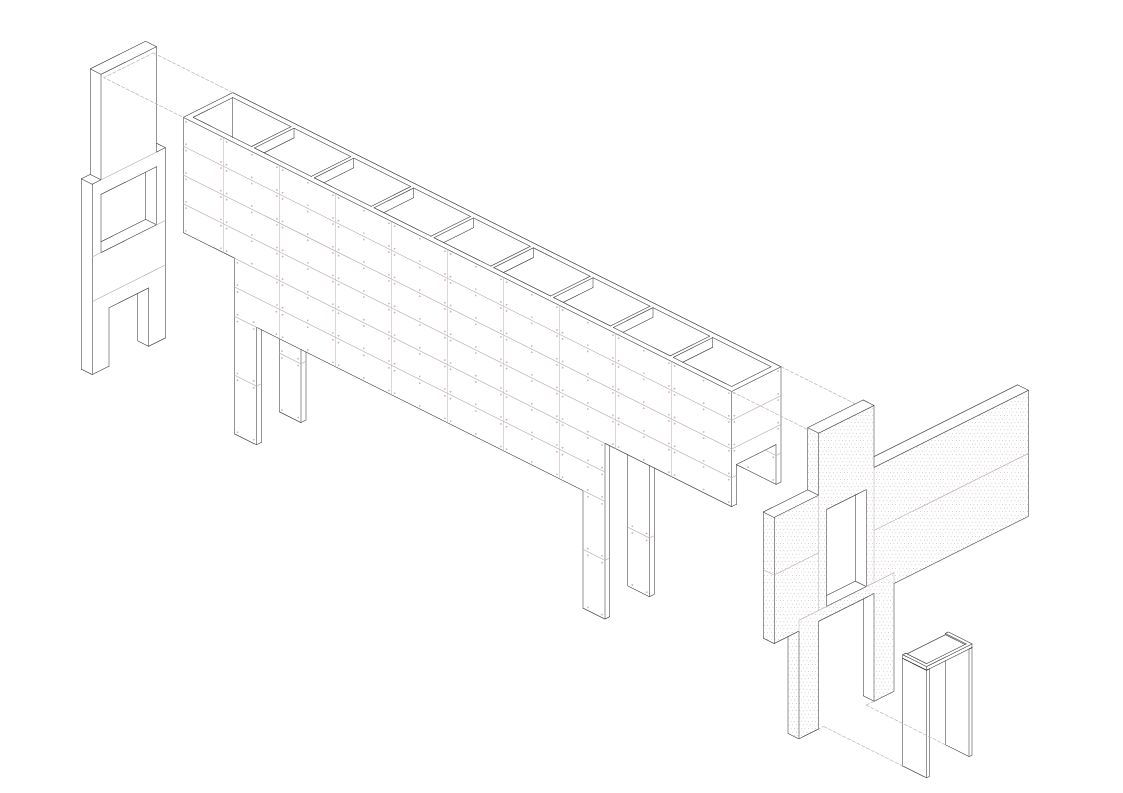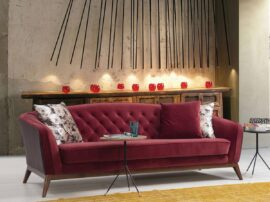competition
for the museum of modern art in Treviso – 1st prize
total floor area: 1.800 sqm
2010 – competition, 2015 – built
site: via Borgo Cavour – Treviso (IT)
client: Città di Treviso
project: studiomas (Marco Rapposelli, Piero Puggina), Heinz Tesar
with: Prof. Arch. Giancarlo Rosa
project team: PR Cad s.a.s (heating), RS ingegneria (structure), ing. Fabio
Martignago (surveyor), ing. Luca Lucchetta, Elena Gomiero, Mattia Arcaro,
Enrico Polato, Valeria Prestianni, Roberto Righetti (modello) graphic design: metodo studio
photo: Marco Zanta
Studiomas architetti and Heinz Tesar won a competition to renovate the museum in 2010. Two elements were added to the 16th-century monastery building: a cruciform façade, which marks the new entrance, and a covered passageway, the “galleria”,
which forms also the new entrance hall.
The Museo Bailo hosts a collection of 20th-century art, but was closed 15 years ago as the former monastery building was in need of significant refurbishment. The museum needed also a new facade, more adequate to its institutional role and to its position in the centre of the ancient town; the existing facade, rebuilt in 1952, was totally lacking in quality. So the project add a new frontage to the southern wing of the historic building, which was bomb-damaged during the second world war and reconstructed in 1952.
The cross-shaped form is a composition of eight precast artificial-stone slabs, dotted with small perforations, which are made from a mixture of Carrara marble and a special white cement. It stands out in front of pre-existing walls, coated in a type of polished white plaster called marmorino. Behind the façade an extension made from white concrete was slotted into a narrow inner courtyard. It forms the museum’s new arcade and hosts ticket hall and book shop, but is also used as an exhibition space and conference hall. This new “galleria” is a smooth concrete body, about 28 metres of lenght, 3 metres of width, 12 metres of height, setting on four thin pillars.
A skylight runs the length of the 28-metre-long extension, helping to bring natural light into the building. Three windows – one in the axis of the cross, another to the right of the door and a third in the flank of the extension – face onto a small piazza in front of the building. One of these windows provides a view into the southern cloister, where a sculpture of Biblical figures Adam and Eve is displayed. The work was designed by Arturo Martini (1889-1947), a Treviso-born artist whose paintings, sculptures and graphics are included in the museum’s collection.
The gallery walls are covered in sand-coloured stucco and the floors are made of terrazzo, Carrara marble and white cement – a reference to the finish used on the building’s outer walls. Partition walls were removed from rooms in the old part of the building to reveal the original layout, which now features a series of wide, vaulted galleries.
A conservative restoration of all the building’s original decorative elements, materials and structures has been achieved in the cloister, in the vaulted rooms as well as in the wall’s decorative paintings. Sculptures are displayed on a series of mottled grey plinths and in vitrines designed by the architects. All the bases, the glass cases, the tables and the furniture have been redesigned like a family of small architectures serving the art works, hosted in the ancient rooms of the museum. The museum reopened to visitors at the end of October 2015.
